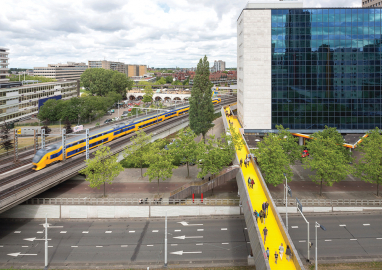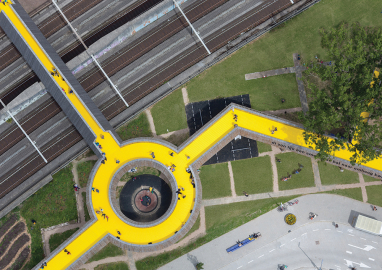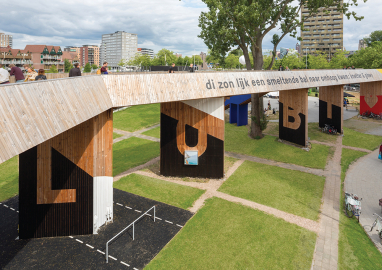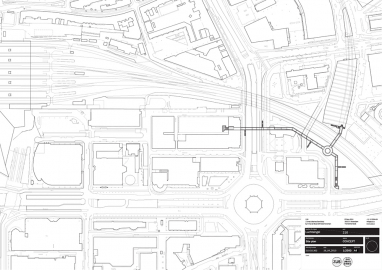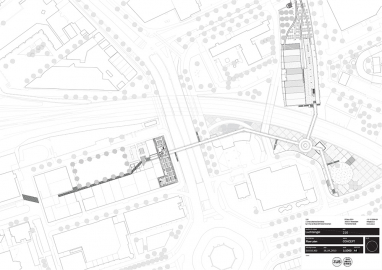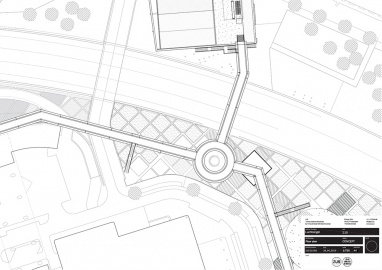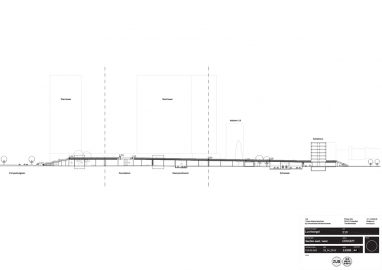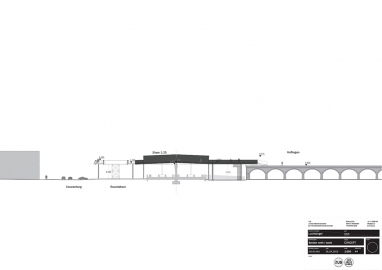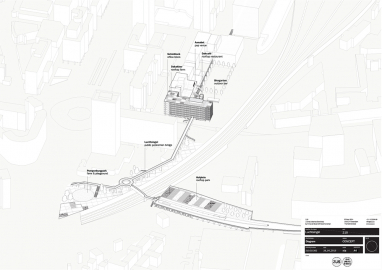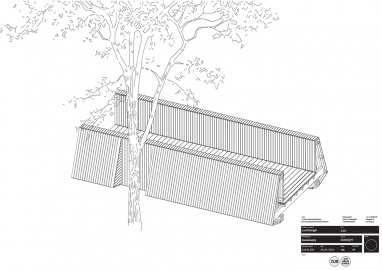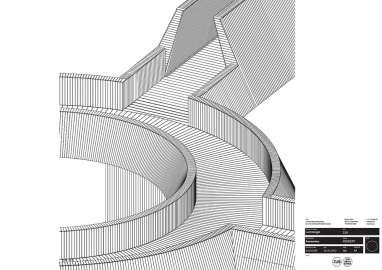Luchtsingel
The Luchtsingel is a 400-meter long pedestrian bridge reconnecting three districts in the heart of Rotterdam while serving as a unifying backbone for numerous urban interventions. The bridge is the world’s first piece of public infrastructure accomplished through crowdfunding, aiming to revive the former derelict Rotterdam Central District.
The Luchtsingel is situated at the center of Rotterdam’s post-war reconstruction. It stretches over the railway line that separates the city center from the north. Before World War II, this location was Rotterdam’s bustling heart. Decades after their separation, the 400-meter-long Luchtsingel pedestrian bridge has reconnected the three districts in the heart of Rotterdam. The inner sides of this wooden construction are made up of planks bought by crowdfunders and have been engraved with their personal message.
Together with new public spaces, including the Delftsehof, Dakakker, Pompenburg Park, and the Hofplein Station Roof Park, a three-dimensional cityscape has arisen. These developments have returned the former heart of Rotterdam back to being green and livable, with the Luchtsingel running throughout as an indispensable unifying factor.
Based on the idea of ZUS’ theory ‘The City of Permanent Temporality’, the Luchtsingel introduces a new way of making city. This means using the city’s evolutionary character and existing forms as a starting point.
In 2009 it was announced that the large scale office development in Rotterdam Central District was cancelled. ZUS decided to use a vacant office building, the Schieblock, to develop an urban laboratory. With its local product store, bar, culinary workshop, info center and its rooftop field the Dakakker, Europe’s first urban farming roof, it is a prototype for sustainable development. The Delftsehof area was transformed into one of Rotterdam’s most vibrant nightlife areas, the Pompenburg Park, with a vegetable garden and playground was landscaped. The roof of the former Hofplein Station is developed as a green events space. By simply increasing accessibility and connectivity for pedestrians, the 400-meter-long bridge ensures synergy between these sites. The Luchtsingel is more than a piece of infrastructure, it is a catalyst of city development. It functions as public backbone for further developments on, alongside and under the bridge.
Economical, environmental and social sustainability are important elements of the Luchtsingel design. The bridge is made of non-treated FSC-approved Douglas wood. Currently the construction uses a temporary building permit for a period of 5 to 10 years and is fully demountable which has been accounted for in the initial project budget. The bridge can be removed effortlessly and without straining the environment. Despite the temporary nature of the bridge the construction is also suitable to be used for a 25-year period, extending the current 10-year permit.
The choice for predominantly using wood is twofold. First, to complement the rather brutalist urban tissue, consisting of concrete, steel and glass. The wooden structure creates a friendly atmosphere, enhanced through its yellow finish and the engraved details. The ageing process adds an even more natural look to the bridge. Secondly, in the process of making the bridge multiple new opportunities emerged through which the design was adapted. The wooden structure offered a lot of flexibility during and after the construction.


